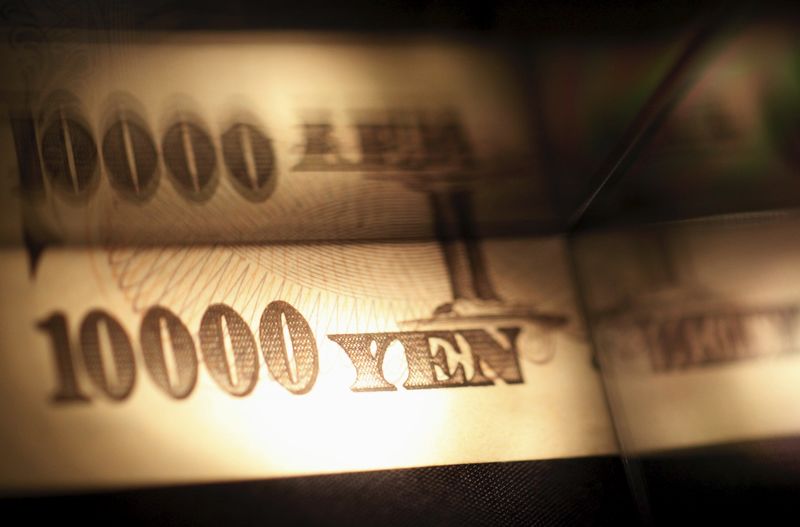
The dollar was also boosted by the prospect of higher-for-longer U.S. interest rates, following strong inflation readings and hawkish Federal Reserve signals from last week.
Sentiment towards Asia was further dulled by weak economic prints from China. China’s disinflation worsened in March, while export and import figures missed expectations for the month.
The yen was among the worst performers for the day, with the USDJPY pair rising 0.3% to a 34-year high of 153.77. The currency, which usually benefits from increased safe haven demand, was largely supplanted by gold and the dollar as a risk-averse trade.
Yen weakness put traders on guard for any potential intervention in currency markets by the Japanese government, following repeated warnings from government officials in recent weeks.
Levels above USDJPY 153 had attracted a record amount of intervention by the Japanese government in 2022, causing a sharp pullback in the currency pair.
Japanese inflation data is also due later this week for more cues on the economy.
The dollar index and dollar index futures steadied in Asian trade after surging to 5-½ month highs on Friday.
The greenback was boosted by safe haven demand after Iran launched a large-scale missile and drone strike against Israel.
But the damage from the strike appeared minimal, and Iran also signaled that it had concluded its attack against Israel. Israeli ministers also reportedly said that they were not considering an immediate retaliation over the strike.
The dollar was also buoyed by rapidly declining bets that the Fed will cut interest rates in the first half of 2024. This came on the back of strong inflation readings for March.
Weak risk appetite and higher-for-longer U.S. rates weighed on most Asian currencies. The Chinese yuan’s USDCNY pair tread water after the People’s Bank kept medium-term lending rates unchanged.
The Australian dollar’s AUDUSD pair rose 0.4%, recovering from a plunge to two-month lows on Friday, while the South Korean won’s USDKRW pair rose 0.3%.
The Indian rupee was fragile with the USDINR pair falling from levels close to record highs, while the Singapore dollar’s USDSGD pair moved sideways.
To read the full article, Click Here

